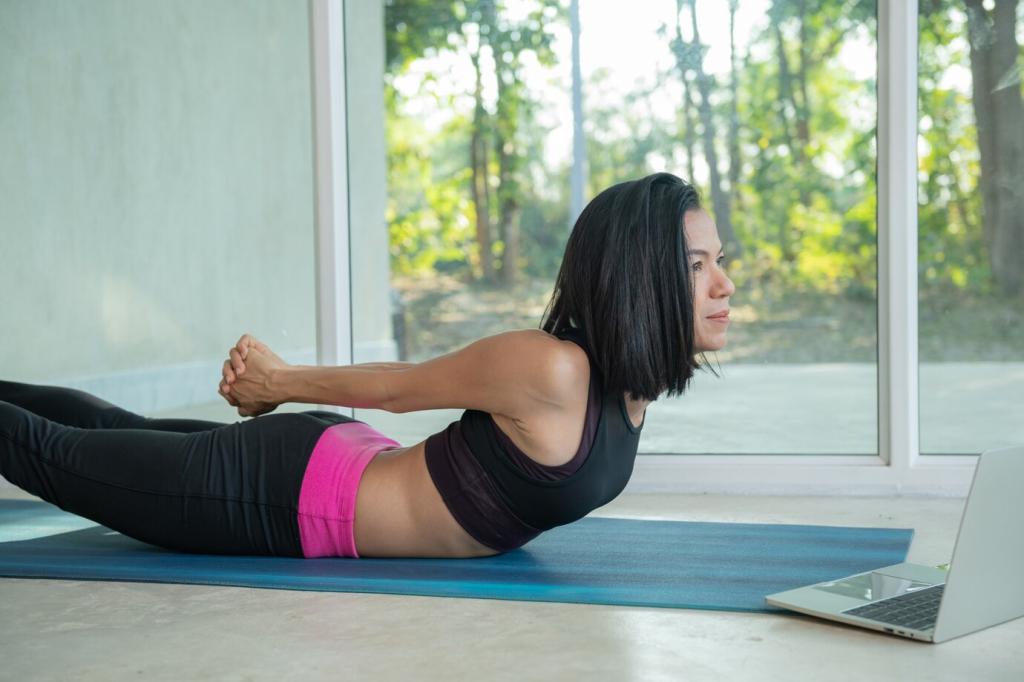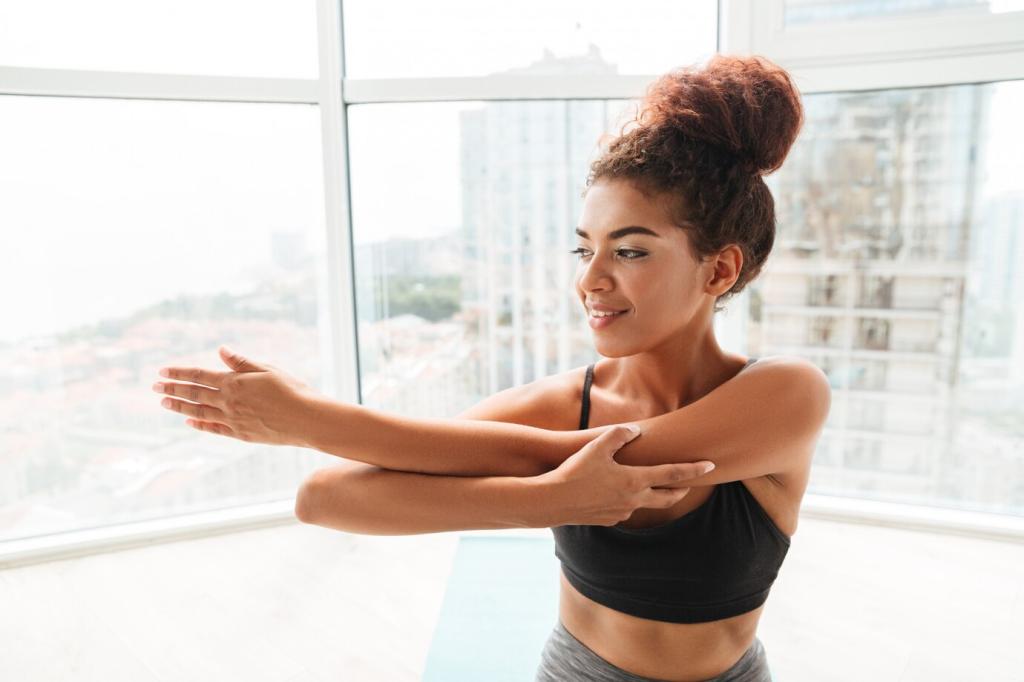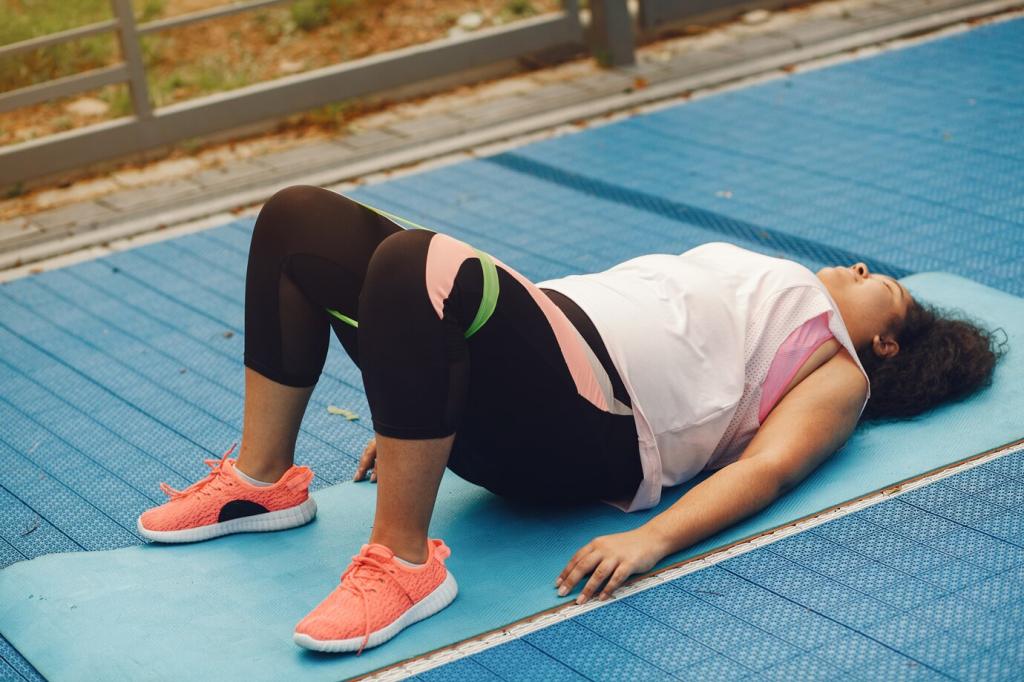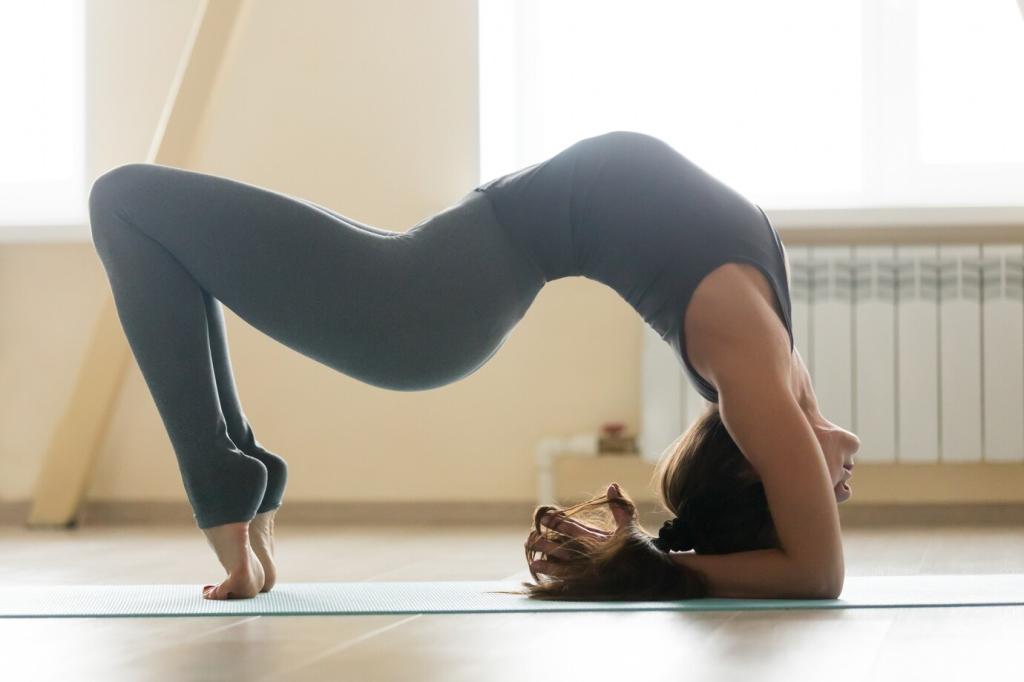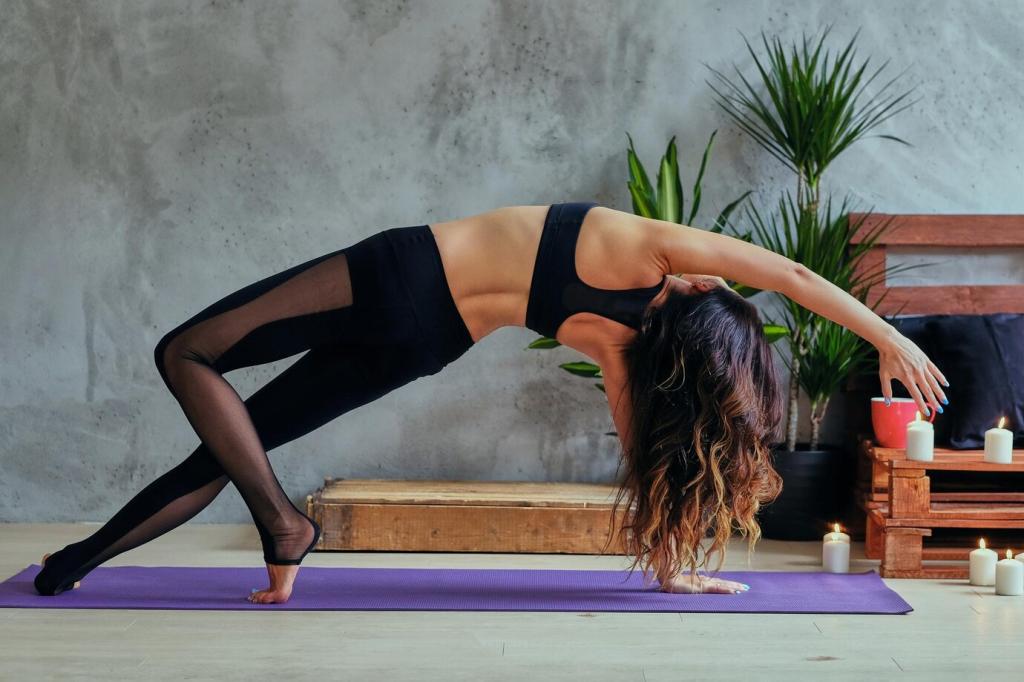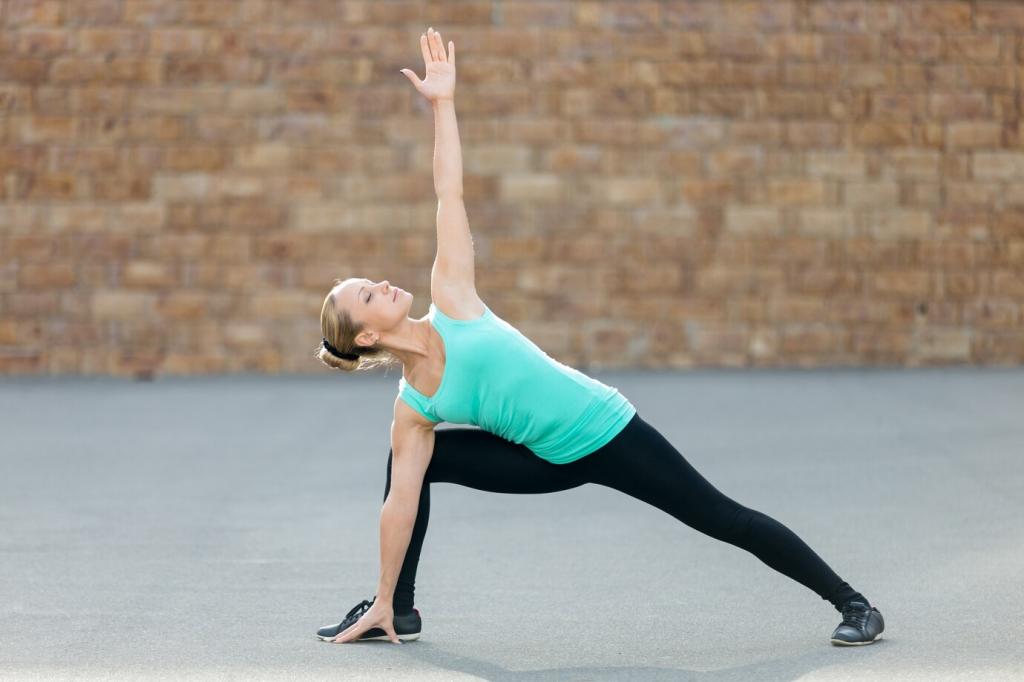Spinal Flexibility and Control
Prime with locust lifts, sphinx with a strap, and camel against a wall to recruit glutes and lower traps. Keep ribs softly knit to avoid dumping into the lumbar spine. After building heat, permit gradual passive opening, observing breath cadence and stopping shy of any pinching sensations.
Spinal Flexibility and Control
Practice cat-cow waves by isolating vertebrae: tailbone initiates, then lumbar, thoracic, and finally cervical. Repeat in tall kneeling and standing for carryover. Five minutes daily can sharpen control and reveal sticky segments. Record a short video weekly to track smoother motion and improved coordination.

